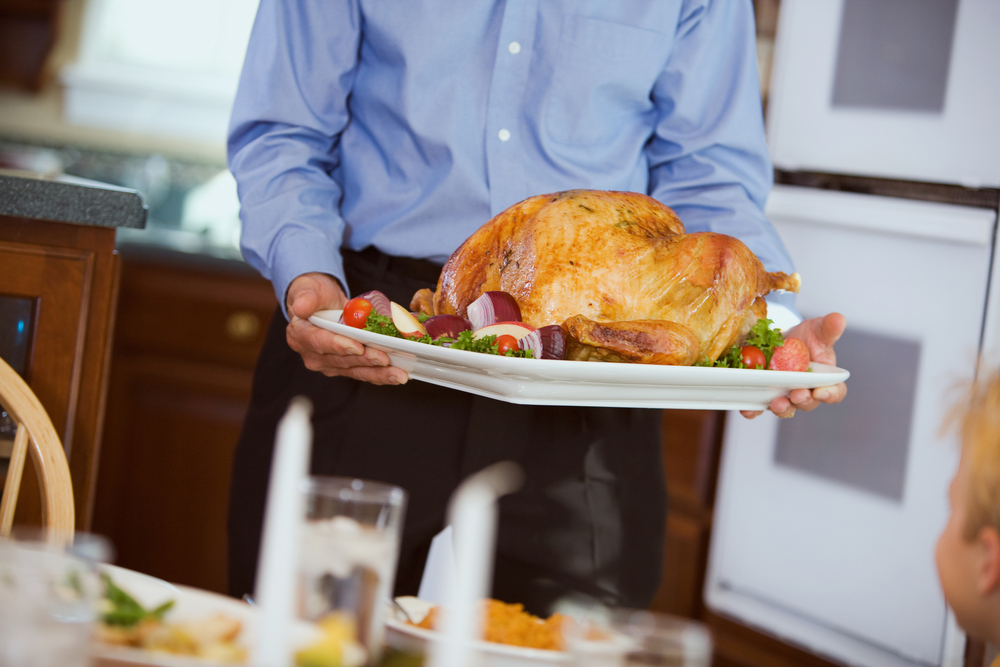Keep Holiday Turkey Dinners Safe and Delicious!
November 21, 2019

The Wyoming Department of Health (WDH) is sharing five tips to help prevent foodborne illness from ruining holiday meals that feature turkey as a star attraction.
Tiffany Greenlee, an epidemiologist with WDH, said mistakes with holiday dinners can sometimes lead to unfortunate illnesses. “Foodborne illness is something that can be avoided with good practices and habits,” she said. “These steps can be especially important when we have large holiday gatherings that are spread over more time than our everyday meals.”
Greenlee suggests the following guidelines from the U.S. Department of Agriculture (USDA) for a safe holiday turkey meal:
Tip 1: Wash your hands
The first step to safe food preparation is always handwashing. Handwashing reduces the risk of foodborne illness and is especially important after handling raw meat, poultry, seafood and egg products. Follow these five simple steps:
- Wet hands with clean, running water, turn off the tap, and apply soap.
- Lather hands by rubbing them together with the soap. Be sure to lather the backs of hands, between fingers, and under nails.
- Scrub hands for at least 20 seconds. Need a timer? Hum the “Happy Birthday” song from beginning to end twice.
- Rinse hands well under clean, running water.
- Dry hands using a clean towel.
Tip 2: Prevent cross-contamination
Turkeys can be large and hard to handle, which makes the risk of cross-contamination higher during meal preparation. Turkeys may contain Salmonella and Campylobacter, common pathogens that can cause foodborne illness. Be sure to fully clean and sanitize sink and other surfaces after handling raw turkey and before prepping other dishes.
To clean surfaces, wash with soap and warm water to remove dirt and debris. Then use a solution of chlorine bleach or an alcohol-based solution to sanitize. Sanitizing will reduce the number of bacteria present on a surface and ultimately leave sinks, counters, and other surfaces safe from harmful bacteria.
Tip 3: Cook the turkey to 165°F
The only way to kill bacteria is to fully cook turkey and any other dishes with raw meat, poultry or egg products. To properly take the internal temperature of turkey, test in three areas — the thickest part of the breast, the innermost part of the wing, and the innermost part of the thigh. Once all three locations reach 165°F, the bird is safe to eat. If one of those locations does not register at 165°F, then continue cooking until all three locations reach the correct internal temperature.
Tip 4: Follow the two-hour rule
It’s tempting to go back for more, but perishable foods are only safe out on the table or buffet for two hours. After two hours, food will be in the “danger zone” of temperatures between 40-140°F, where bacteria can rapidly multiply and cause the food to become unsafe. Make sure all leftovers are placed in the refrigerator within two hours to safely enjoy them later. Put them in small, shallow containers. Food left out for more than two hours should be discarded.
Tip 5: Ask questions!
Anyone with questions can call the USDA Meat and Poultry Hotline at 1-888-MPHotline (1-888-674-6854) to talk to a food safety expert or chat live at ask.usda.gov from 8 a.m. to 4 p.m., Monday through Friday. For help on Thanksgiving Day, the hotline is available from 6 a.m. to noon.
Visit FoodSafety.gov to learn more about safely selecting, thawing and preparing a turkey.
